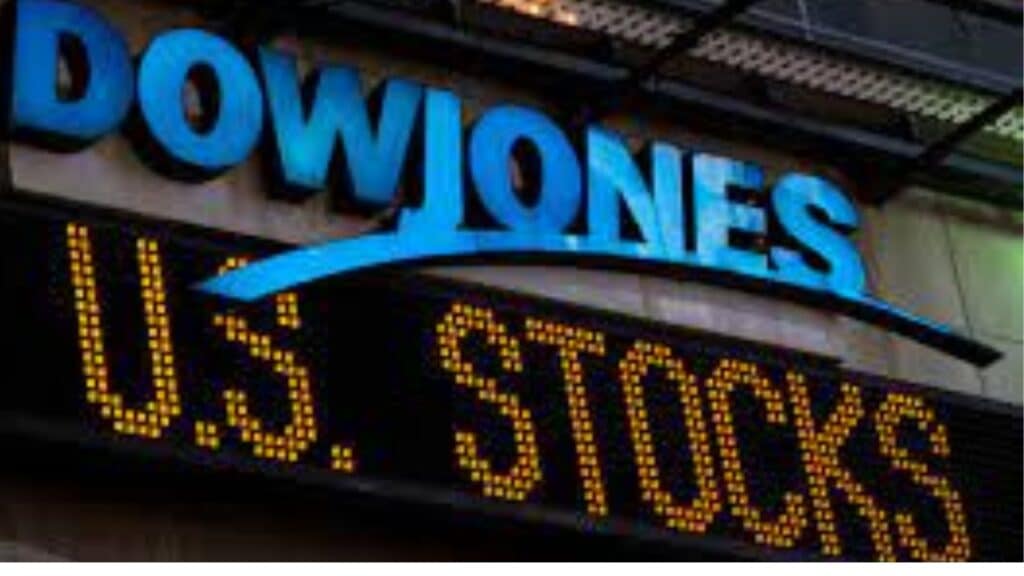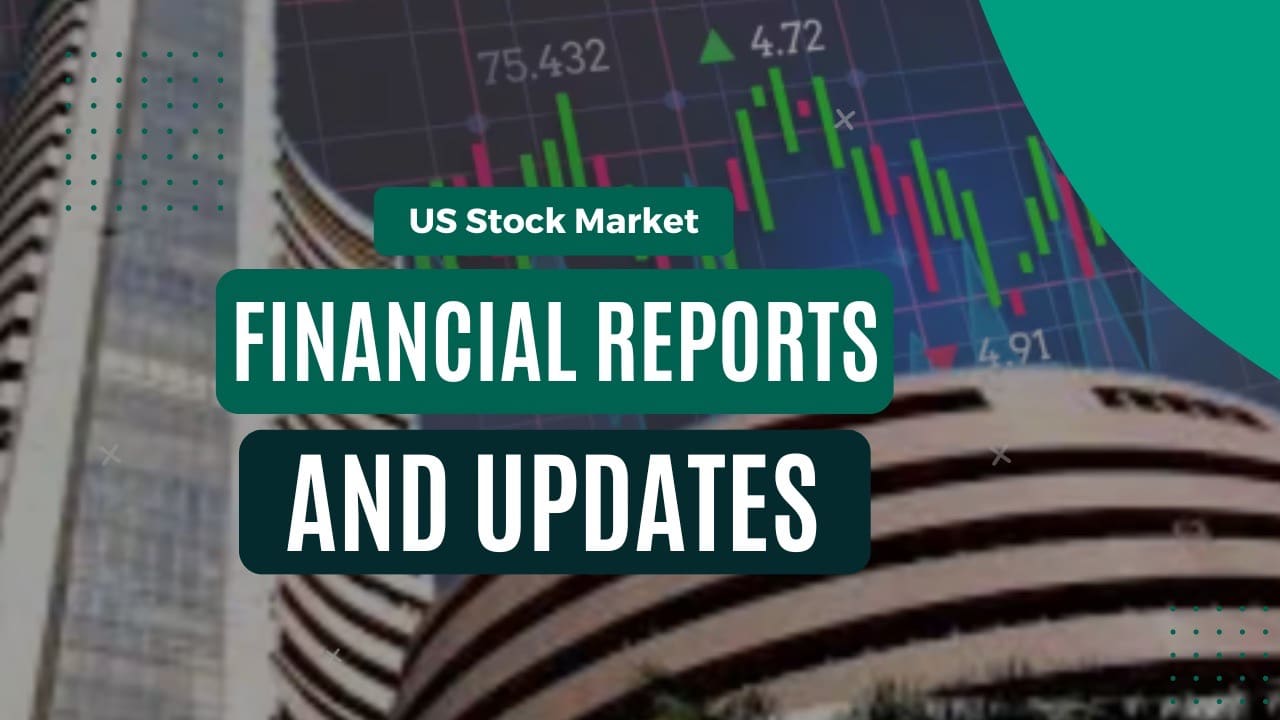In this Article
In the dynamic geography of the financial world, staying abreast of the ultimate developments in the U.S. stock market is consummate for investors, analysts, and enthusiasts. The twinkle of the American economy and the U.S. stock market is a mark for global fiscal health.
I will guide you through the intricate maze of market oscillations and profitable pointers. This composition delves into the rich troves of data from leading sources, offering a comprehensive overview of current affairs.
One of the primary sources steering our trip through the fiscal maze is the venerable U.S. Securities and Exchange Commission( SEC). As the top nonsupervisory body overseeing securities assiduity, the SEC is vital in icing translucency and securing investors’ interests.
We will explore the perceptivity deduced from SEC forms and reports, offering an immediate look at the health and performance of the companies listed on U.S. stock exchanges.
Also, the article draws upon the total data handed by fiscal titans similar to Bloomberg, Reuters, and MarketWatch. These fiscal news bootstrappers must deliver real-time market updates, analysis, and expert commentary. Forming well-informed opinions requires having a pulse on U.S. stock market financial reports and updates.
Using their expansive resources, we gain a nuanced understanding of the factors shaping the market’s line. Likewise, the fiscal reports and updates from the New York Stock Exchange( NYSE) and NASDAQ, two of the largest and most influential stock exchange encyclopedia allies, serve as critical compass points.
Assaying the data expiring from these exchanges offers a grainy view of stock movements, market trends, and the broader profitable geography. Together, we will unravel the complications, decode the trends, and gain precious perceptivity into the ever-evolving realm of US Stock Market Financial Reports and Updates.
Significance of US Stock Market Financial Reports and Updates
US Stock Market Financial Reports and Updates encompass a comprehensive set of documents and accurate- -time information that offers perceptivity into intimately traded companies’ fiscal performance, stability, and outlook. These reports generally include daily and periodic forms submitted to nonsupervisory bodies like the U.S.
Securities and Exchange Commission( SEC). They give a detailed breakdown of a company’s income, charges, means, and liabilities, allowing stakeholders to assess its fiscal health and make informed opinions.
The significance of these reports lies in their part as a foundation of transparency and responsibility in the fiscal requests. Similarly, these reports are pivotal tools for assessing investment openings, managing pitfalls, and fostering confidence in the market’s integrity.
Importance for Investors, Analysts, and the General Public
US Stock Market Financial Reports and Updates hold immense significance for colorful stakeholders. Investors calculate on these reports to make informed investment opinions, assessing companies’ fiscal health and growth eventuality.
Analysts work the data to give market predictions, recommendations, and keenness. These reports offer a window into the broader profitable geography for the general public.
It furnishes a base for understanding market trends and profitable pointers. Also, the information published in these reports directly influences stock prices and market dynamics. Investors use the data to anticipate market movements and acclimate their portfolios consequently.
The delicacy and punctuality of these reports are consummate, as they directly impact investors’ confidence and contribute to market effectiveness.
The Robust Character of Financial Markets
Financial markets are innately dynamic, characterized by constant price oscillations, investor sentiment, and profitable conditions. A myriad tells the dynamic nature of these markets of factors, including geopolitical events, worthwhile data releases, and commercial earnings reports.
US Stock Market Financial Reports and Updates are vital in navigating this energy, furnishing a real-time shot of profitable health and commercial performance. Understanding the ever-changing nature of fiscal markets is essential for stakeholders to acclimatize strategies, seize openings, and alleviate pitfalls in this fast-paced terrain.
US Stock Market Financial Reports and Updates
NASDAQ ( Report of 20 Companies)

| SYMBOL | COMPANY NAME | PRICE | CHANGE | %CHANGE |
| ABNB | Airbnb Inc | 135.98 | +2.26 | +1.69 |
| AMD | Advanced Micro Devices Inc | 138.58 | +2.57 | +1.89 |
| CEG | Constellation Energy Corp | 116.24 | +0.88 | +0.76 |
| AMZN | Amazon.com Inc | 145.24 | +0.67 | +0.46 |
| AMGN | Amgen Inc | 303 | -0.17 | -0.06 |
| AEP | American Electric Power Company Inc | 84.07 | +0.68 | +0.82 |
| CDW | CDW Corp | 214.04 | -1.04 | -0.48 |
| CCEP | Coca-Cola Europacific Partners PLC | 64.61 | -0.84 | -1.28 |
| ADI | Analog Devices Inc | 186.55 | +0.48 | +0.26 |
| MDB | MongoDB Inc | 365.39 | +2.98 | +0.82 |
| DASH | DoorDash Inc | 94.81 | +0.91 | +0.97 |
| ROP | Roper Technologies Inc | 523.07 | -1.1 | -0.21 |
| ANSS | ANSYS Inc | 344.08 | -0.08 | -0.02 |
| SPLK | Splunk Inc | 152.22 | +0.06 | +0.04 |
| AAPL | Apple Inc | 181.18 | -0.73 | -0.4 |
| AMAT | Applied Materials Inc | 149 | -0.31 | -0.21 |
| GEHC | GE Healthcare Technologies Inc | 76.62 | +0.05 | +0.07 |
| ASML | ASML Holding NV | 703.34 | +3.05 | +0.44 |
| TEAM | Atlassian Corp | 226.1 | +3.28 | +1.47 |
| ADSK | Autodesk Inc | 229.52 | +0.6 | +0.26 |
In this table, each row represents a company in the NASDAQ 100 indicator, with columns displaying the stock symbol, company name, current stock price, price change, and chance change. The data gives a part of the market, showing how each company’s stock has performed lately.
Positive values indicate an increase in the” CHANGE” columns, while negative values signify a drop. The” UNCH” in the CHANGE column denotes no chance to change. This table serves as a terse reference for investors, recapitulating crucial information about the NASDAQ 100 companies.
Stock Market Performance
| Metrics | Performance |
| Open | 14,500.11 |
| Day High | 14,625.19 |
| Day Low | 14,477.57 |
| Prev Close | 14,510.30 |
| 52 Week High | 15,150.07 |
| 52 Week High Date | 12/28/23 |
| 52 Week Low | 10,265.04 |
| 52 Week Low Date | 01/06/23 |
| YTD % Change | -3.25 |
| 1 Year % Change | 40.94 |
Dow Jones

| Company Name | Price | Change | %Change |
| Ainos Inc. | $2.74 | 1.01 | 58.38% |
| Safe & Green Development Corp. | $2.03 | 0.67 | 49.26% |
| Elevation Oncology Inc. | $0.87 | 0.28 | 47.81% |
| PARTS iD Inc. | $0.00 | 0.00 | 34.38% |
| Duos Technologies Group Inc. | $2.57 | 0.55 | 26.91% |
| MAIA Biotechnology Inc. | $1.51 | 0.32 | 26.89% |
| Axogen Inc. | $8.55 | 1.80 | 26.67% |
| Inovio Pharmaceuticals Inc. | $0.72 | 0.15 | 25.76% |
| AdTheorent Holding Co. Inc. | $1.85 | 0.36 | 24.16% |
| Elutia Inc. | $3.40 | 0.59 | 21.00% |
The Table Provides
- A shot of the Dow Jones top stock market players.
- Showcasing the once Price Change in bones.
- The Change Chance.
Notable highlights include Ainos Inc. with a significant 58.38% increase, Safe & Green Development Corp. with a 49.26% surge, and Axogen Inc. with a 26.67% rise. PARTS iD Inc. and Inovio Pharmaceuticals Inc. show no change.
The table offers a terse overview of recent stock movements, furnishing investors with crucial data for informed decision-making in the dynamic market geography.
Stock Market Performance
| Duration | Performance |
| 5 Days | -1.79% |
| 1 Month | 2.19% |
| 3 Months | 9.47% |
| YTD | 1.79% |
| 1 Year | 20.07% |
5 Days: The market declined by 1.79% in the short term, indicating recent volatility or corrections.
1 Month: Over the past month, there has been a positive trend, with a gain of 2.19%, suggesting a recovery or upward incentive.
3 Months: The market has shown notable growth of 9.47% in the last three months, reflecting a more sustained positive trend.
YTD(Year-to-Date): From the morning until the present, the market has seen a decline of 1.79%, conceivably told by colorful profitable factors or global events.
1 Year: Over the past year, Dow Jones has demonstrated a robust performance, with a significant gain of 20.07%, reflecting a bullish trend and overall market strength.
This data provides investors and analysts with perceptivity into the recent and literal performance of the Dow Jones indicator, enabling them to make informed opinions grounded on market trends and conditions.
The positive one-time performance suggests a favorable investment climate, while shorter-term oscillations may warrant a near examination of current market dynamics.
S&P 500

| Name | Price | Change | % Change |
| Verizon | 40.19 | 0.82 | 2.08 |
| Boeing | 248.96 | 4.02 | 1.64 |
| Home Depot | 342.90 | 4.31 | 1.27 |
| Dow Inc | 54.82 | 0.63 | 1.16 |
| American Express | 189.02 | 1.88 | 1.00 |
| Caterpillar | 288.95 | 2.85 | 1.00 |
| Goldman Sachs | 386.43 | 3.48 | 0.91 |
| JPMorgan Chase | 172.26 | 0.85 | 0.50 |
| 3M | 108.59 | 0.42 | 0.39 |
| Walt Disney | 90.89 | 0.33 | 0.36 |
| J&J | 161.09 | 0.46 | 0.29 |
| Travelers Companies | 193.06 | 0.52 | 0.27 |
| Merck & Co | 117.19 | 0.18 | 0.15 |
| Cisco Systems | 50.10 | 0.02 | 0.04 |
| Intel | 46.88 | 0.01 | 0.02 |
| Visa | 259.65 | 0.04 | 0.02 |
This table shows the financial performance of the topmost companies listed on the S&P 500. Crucial criteria include the current stock price in dollars, the change in price, and the percentage change. Each row represents a different company; the corresponding values illustrate how their stock prices have changed lately.
For illustration, Verizon saw a significant 2.08% increase, while Intel endured a minimum 0.02% change. Investors can use this table to gauge the recent market trends and make informed opinions grounded on the performance of these prominent S&P 500 companies.
Stock Market Performance
| Timeframe | Change (%) |
| 5 Day | -1.52 |
| 1 Month | 2.02 |
| 3 Month | 9.02 |
| YTD | -1.52 |
| 1 Year | 20.59 |
5 Day: The indicator declined by 1.52 over the last five days, indicating short-term market movements.
1 Month: Over the past month, the S&P 500 saw a positive change of 2.02%, reflecting an average increase in value.
3 Month: Over the last three months, the index has shown a more substantial growth of 9.02%, indicating a positive trend in the medium term.
YTD(Year-to-Date): Year-to-date performance indicates that the S&P 500 has dropped by 1.52% since the start of the current program year.
1 Year: Looking at a one-year timeframe, the S&P 500 has shown strong performance with a significant increase of 20.59%, furnishing perceptivity into the indicator’s long-term growth.
Investors and analysts use similar data to assess the market’s recent and literal performance, abetting decision-making and trend analysis for investment strategies.
The positive or negative percentage changes in different timeframes give a precious environment for understanding the dynamics and instigation of the stock market.
US Stock Market Financial Reports and Updates: The Role of Economic Indicators
Economic indicators play a vital part in shaping US Stock Market Financial Reports and Updates, furnishing a comprehensive frame for understanding the broader profitable geography and impacting the line of fiscal markets. Then is a breakdown of how worthwhile pointers affect these reports
1. Leading pointers Influence expectation:
Leading pointers, like consumer confidence, casing thresholds, and manufacturing data, offer perceptivity into the unborn direction of frugality. Investors and analysts nearly cover these pointers to anticipate trends and acclimate their investment strategies. The expectation of profit shifts attendants’ decision-making and influences the content of fiscal reports.
2. Economic Health Reflects in Commercial Performance:
Economic pointers such as GDP growth, severance rates, and affectation rates serve as standards of overall profitable health. The performance of individual companies is naturally linked to the broader advantageous conditions. Fiscal reports reflect how companies navigate or subsidize prevailing good trends, showcasing the impact of macroeconomic factors on commercial earnings and profit.
3. Interest Rates and Monetary Policy:
Impact Financial Metrics Central banks, particularly the Federal Reserve, use interest rates and financial policy tools to steer profitable exertion. Changes in interest rates have an impact on borrowing costs, spending, and investment opinions. Fiscal reports frequently punctuate the impact of interest rate movements on a company’s profitability, debt operation, and overall fiscal health.
4. Affectation’s Ripple Effect on Costs and Pricing:
Affectation, as indicated by criteria like the Consumer Price Index( CPI), affects product costs and consumer buying power. Financial reports tell how companies navigate the challenges of rising costs and whether they pass these costs onto consumers through price adaptations. Understanding inflationary pressures is pivotal for assessing a company’s adaptability and rigidity.
5. Employment Data Shapes:
Consumer spending Severity rates and job creation numbers directly impact consumer spending, a crucial motorist of profitable exertion. Fiscal reports frequently incorporate perceptivity into how companies map to capture consumer demand in the environment of employment trends. Changes in employment situations can impact a company’s profit and market positioning.
6. Global profitable pointers:
Impact Transnational Corporations For transnational corporations, global profitable pointers, including international trade data and geopolitical developments, contribute to fiscal reports. Companies operating encyclopedias must navigate different advantageous conditions, and budgetary updates exfoliate light on their strategies in response to worldwide good shifts.
Economic pointers form a dynamic background that shapes the content and narrative of US Stock Market Financial Reports and Updates. Investors and analysts keenly interpret these reports against prevailing profitable conditions to make informed opinions in the dynamic world of fiscal markets.
Conclusion
The significance of US stock market financial reports and updates can not be exaggerated as they serve as the compass guiding investors through the intricate maze of market dynamics. Examining the data of prominent indicators like NASDAQ, Dow Jones, and S&P 500 gives a comprehensive understanding of market trends, individual stock performances, and economic health.
The real-time receptivity from these reports empowers investors to make informed opinions, navigate uncertainties, and subsidize openings. In the ever-evolving geography of fiscal markets, where figures tell compelling stories, staying attuned to the pulse of the NASDAQ, Dow Jones, and S&P 500 through scrupulous analysis of fiscal reports isn’t just a strategy. It is the key to unleashing the doors of success in the dynamic investment realm.
FAQs [Frequently Asked Questions]
What are the Financial Indicators of US Stocks?
The DJIA, S&P 500, and NASDAQ serve as criteria for the stock markets, gauging investor confidence and potentially reflecting broader profitable health. While these pointers give perceptivity into market sentiment, pointers like GDP offer a more direct measure of the overall good line, offering a comprehensive assessment of sound direction.
What Reports Affect the Stock Market?
Company-specific events profoundly tell stock prices. These include combinations, earnings reports, dividend dormancy, innovative product developments, administrative hirings or discharges, and allegations of fraud or negligence. Investors keenly cover these developments as they directly impact individual stocks’ market valuation and performance
Should I Invest in the US Stock Market Now?
Determining to invest in the US stock market depends on individual financial pretensions, trouble forbearance, and market conditions. It’s judicious to conduct a thorough disquisition, consider long-term objects, and, if uncertain, consult with a financial advisor. Diversifying and staying informed are pivotal strategies in navigating the stock market’s robust character.
What are Stock Trading Reports?
Stock trading reports are documents abstracting the performance of a stock over a specific period. They include crucial criteria like opening and ending prices, highs and lows, and trading volume and frequently give specialized analysis. Investors use these reports to assess market trends and make informed opinions about buying, dealing, or holding stocks.
Reference
- CNBC. (n.d.). Check out S&P midcap index’s stock price (.mid) in Real time. CNBC. https://www.cnbc.com/quotes/.MID
- SPX: S&P 500 index overview. MarketWatch. (n.d.). https://www.marketwatch.com/investing/index/spx
- Stocks. Nasdaq. (n.d.). https://www.nasdaq.com/market-activity/stocks
- US markets: US Stock Market Data – Dow Jones, NASDAQ, S&P 500, US market news – moneycontrol. English. (n.d.-b). https://www.moneycontrol.com/us-markets/
- Top gainers US stocks: US stock market top gainers today, gaining stocks – moneycontrol. English. (n.d.-a). https://www.moneycontrol.com/us-markets/market-movers/top-gainers?index=Dow+jones











